One of the most widely used and helpful Microsoft Word skills you can master is how to use Track Changes in Word. The ability to see every change made to a document, no matter how small, and comment on it, makes a Word document a versatile collaboration tool, especially in the age of remote work. Read on to find out how to set up Track Changes to your liking.
Read more: How to do a mail merge in Microsoft Word
QUICK ANSWER
To use Track Changes in Word, start a new document. In the Review tab, click on the top half of the Track Changes button to turn Track Changes on or off. Right-click on an individual change to accept it, reject it, or add a comment.
JUMP TO KEY SECTIONS
How to turn track changes on or off
In a new Word document, go to the Review tab.
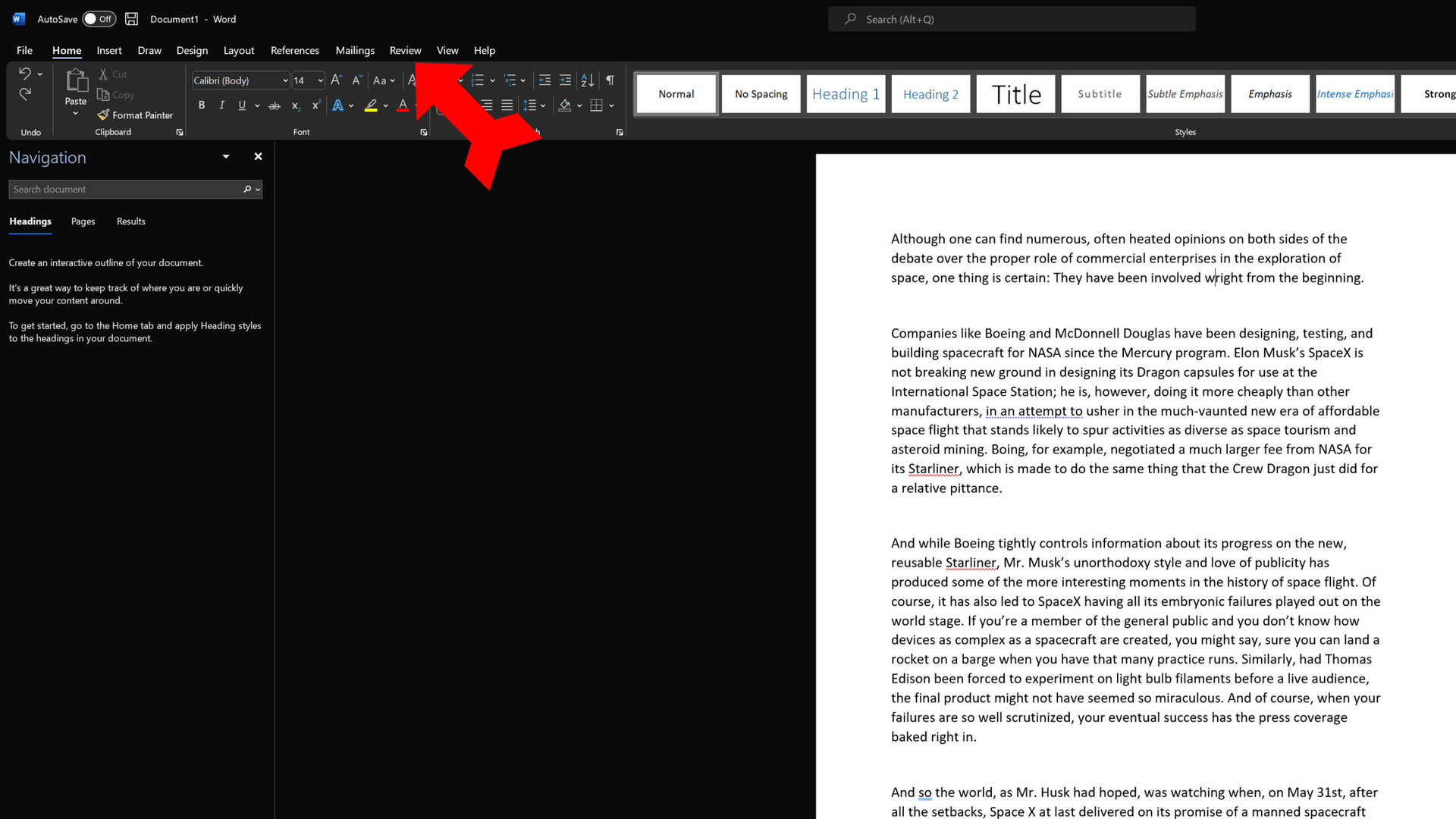
Kevin Convery / Android Authority
In the Review tab, hover your mouse over the Track Changes button, and you will notice that, like other buttons in Word, this one is split into two buttons. The lower half controls the parameters of the feature—in this case, whose changes are being tracked. The upper half of the button is the toggle that turns the feature on or off.
Once we turn it on, any change to the document will be indicated either on the page or in the margin in a balloon. We’ll turn it on here and correct some errors in the text.

Kevin Convery / Android Authority
With Track Changes on (notice the highlighted button), we corrected a few spelling errors in the text. You can see the corrections in red on the page.
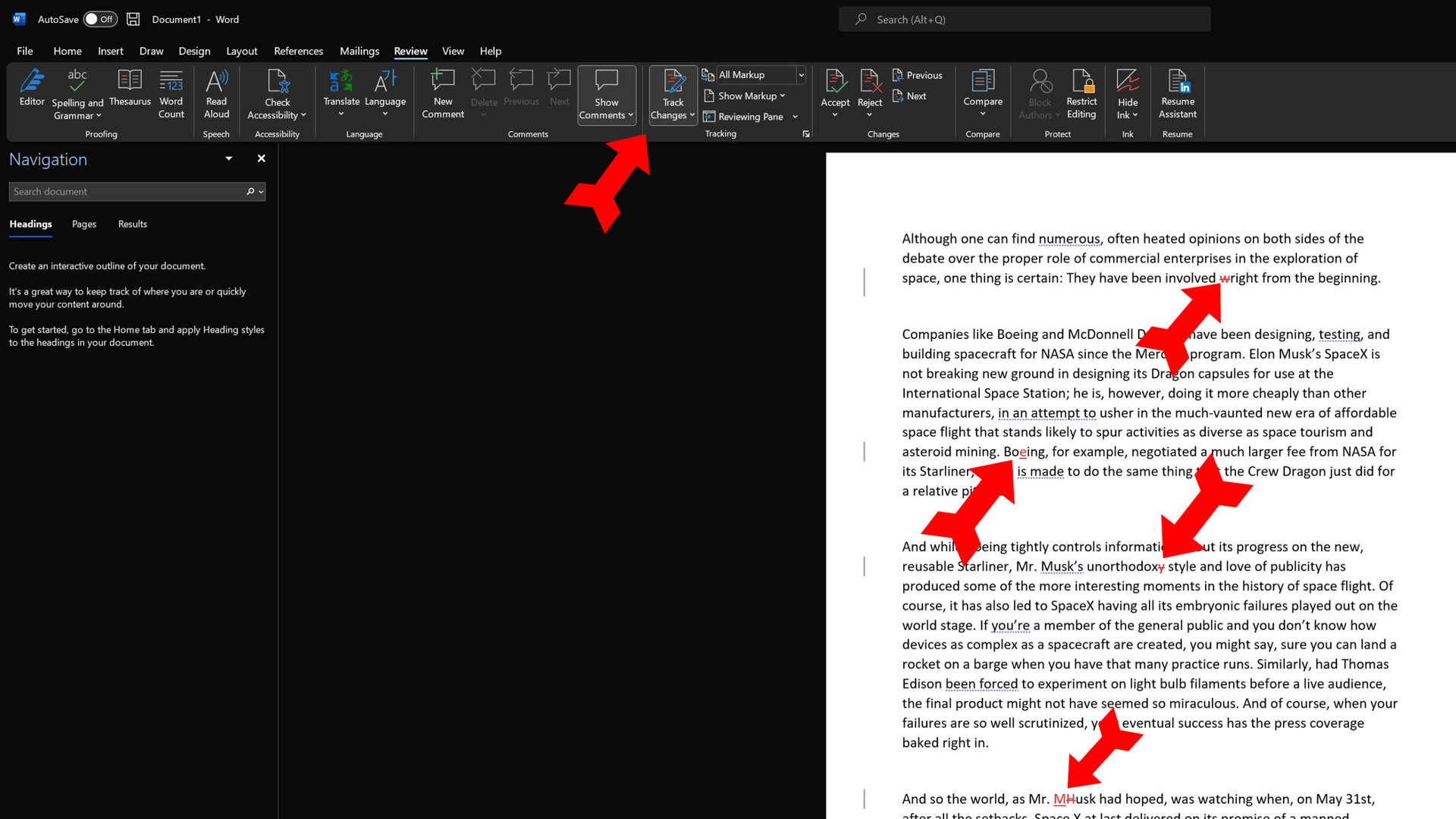
Kevin Convery / Android Authority
Those changes might be hard to see. To make them more visible, use the Show Markup button (right next to the Track Changes button) to select Show Revisions in Balloons.
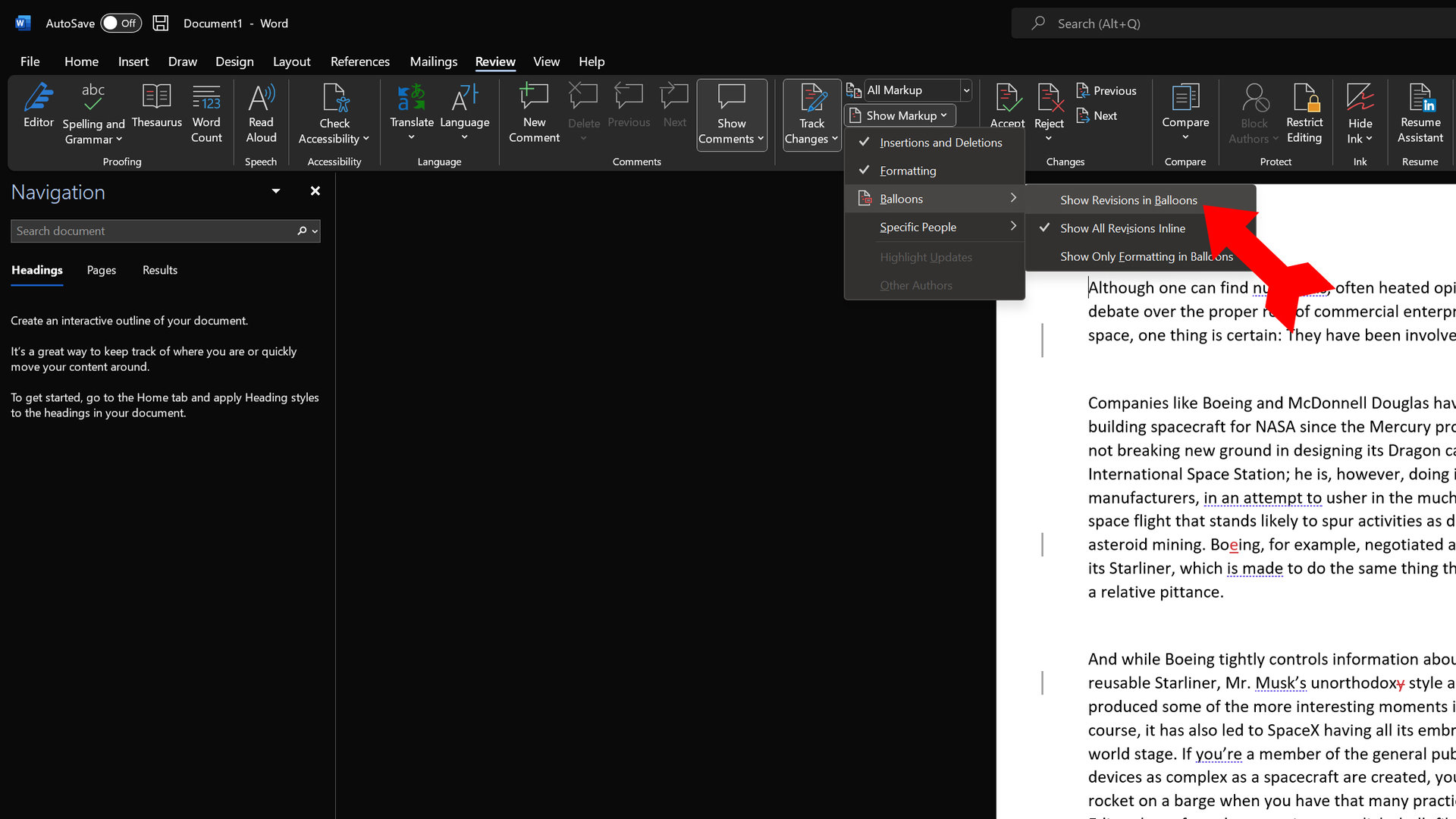
Kevin Convery / Android Authority
Now you can see the corrections in the right margin, along with a line indicating exactly where in the text the correction took place.
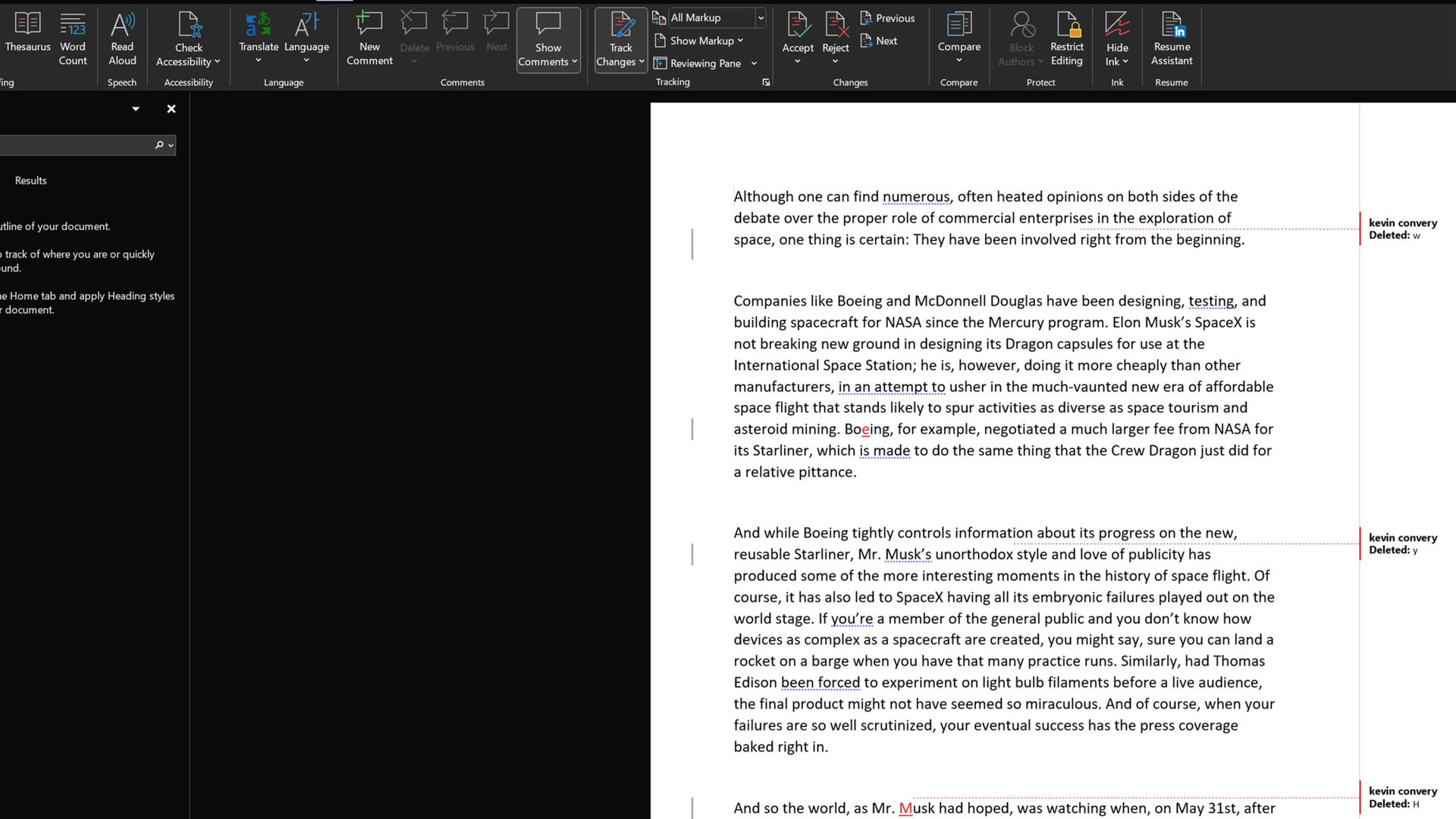
Kevin Convery / Android Authority
How to show or hide changes
To the right of the Track Changes button, three smaller buttons help you control the feature. The topmost of these buttons should be set to All Markup by default, showing all revisions on the page. If you do not wish to display the changes made, this button will give you several options:
- Simple Markup: This will hide the changes, but indicate the line changed with a red mark in the left margin.
- All Markup: This will show the changes made, either inline or in the margin.
- No Markup: This will show the changed text without indicating what was changed or where.
- Original: This will show the text before any tracked changes were made.

Kevin Convery / Android Authority
How to accept or reject changes
There are two main ways to accept or reject the changes made to a document. One is to right-click on an individual correction, whether inline or in the margin, which will bring down a menu that includes the options to accept or reject the change made.

Kevin Convery / Android Authority
The other way is to use the buttons at the top of the page. Place your cursor at the beginning of the document to ensure you don’t miss any changes. Then click the Next button to start reviewing tracked changes.
As Word highlights each revision, click either the Accept or the Reject button. This will perform the indicated action and bring up the next tracked change.
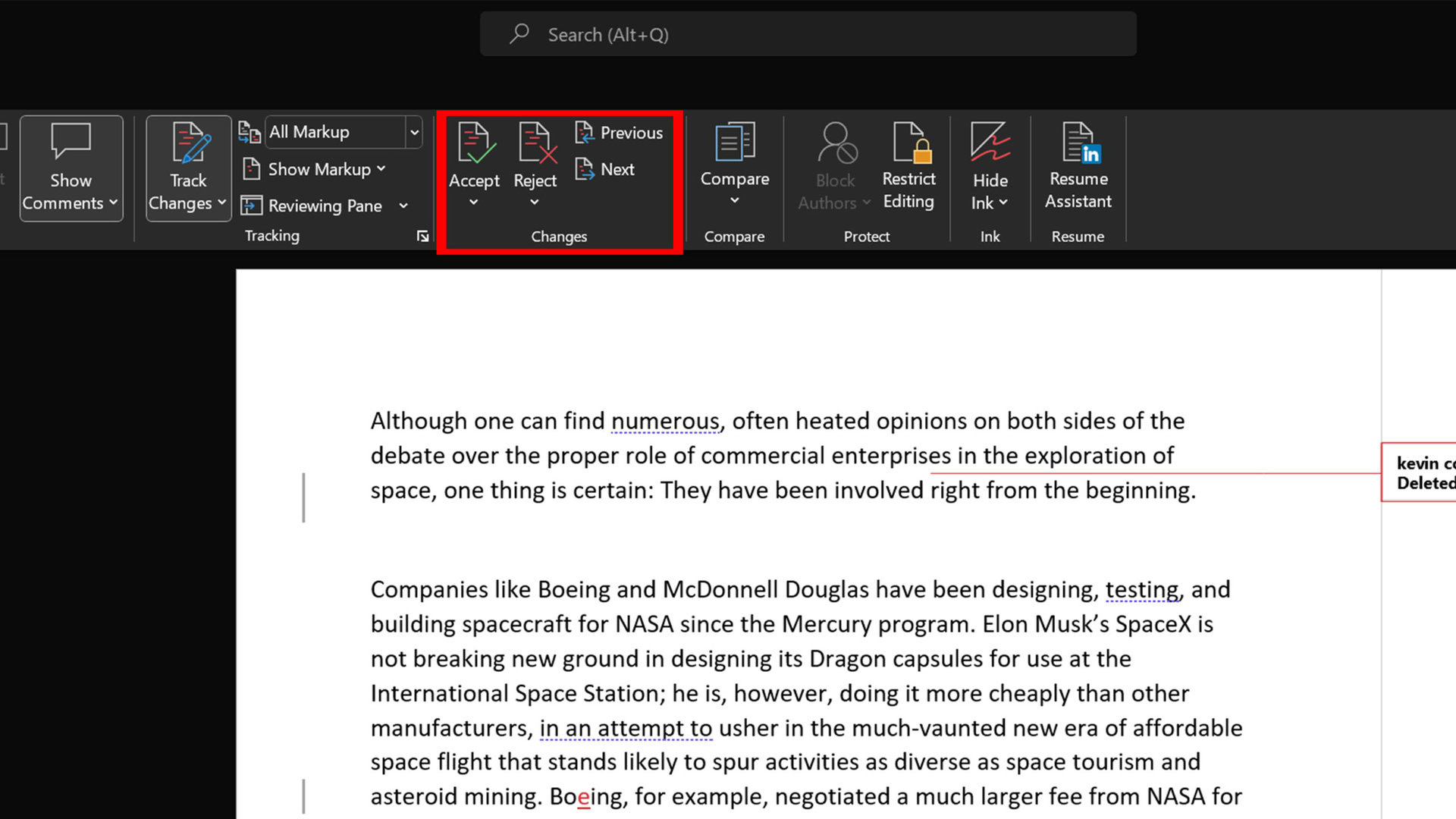
Kevin Convery / Android Authority
The ability to discuss the revision process by commenting on individual corrections or whole sections of a document really helps make Word Track Changes a collaborative tool. Again, there are two main ways to accomplish this.
The first way is the tried-and-true right-click method. Right-click a revision, and a menu will drop down giving you two places to choose to add a comment.
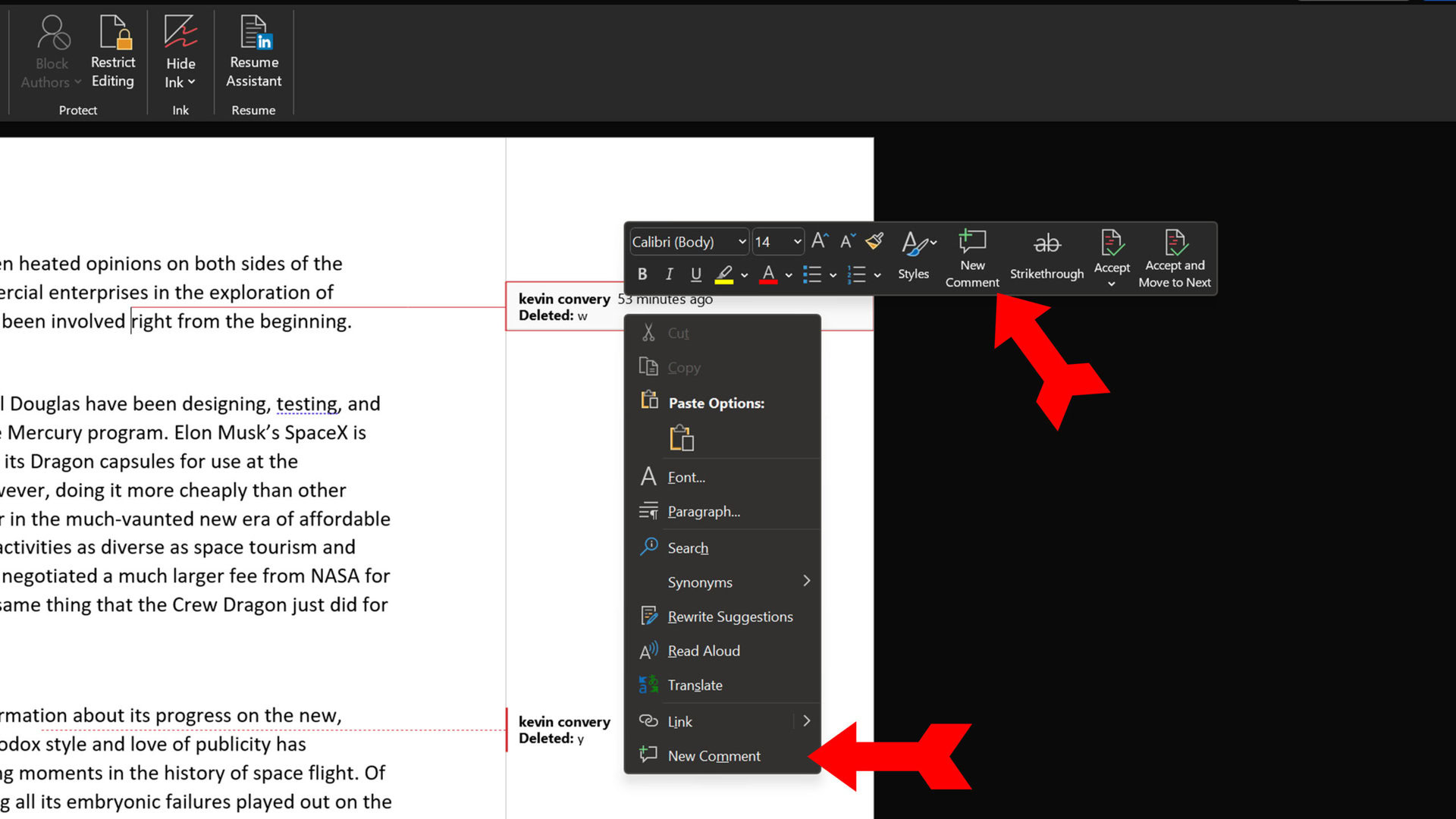
Kevin Convery / Android Authority
The other way is to use the New Comment button at the top of the page. Use your cursor to highlight the change you want to discuss and click the New Comment button. You can also use the New Comment button to comment on a sentence or a paragraph instead of a revision. Just highlight what you want to comment on and click the New Comment button.
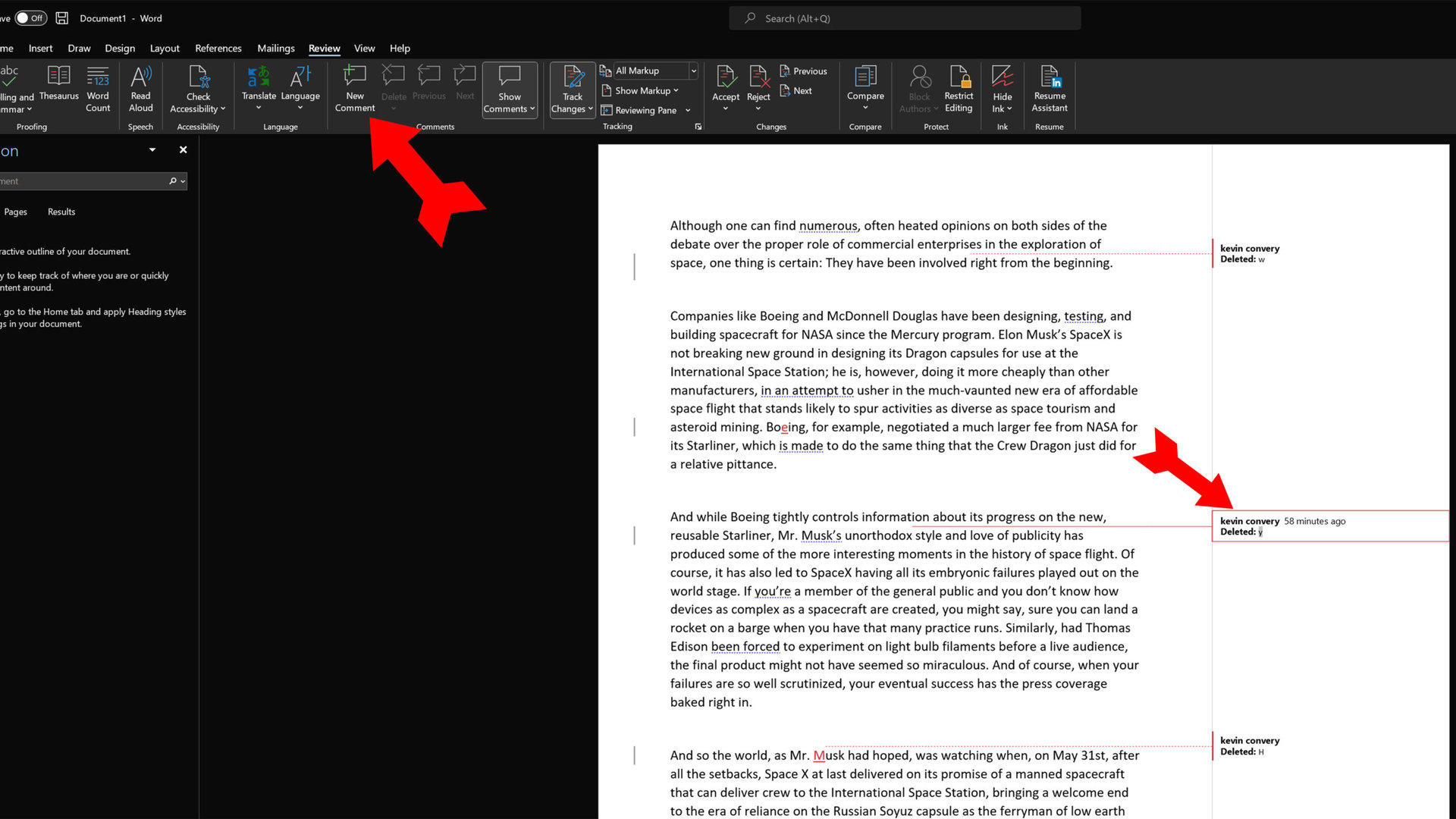
Kevin Convery / Android Authority
Using either method, a comment box will appear in the appropriate place. Type in what you want to say about the revision and press CTRL-Enter to insert it into Track Changes.
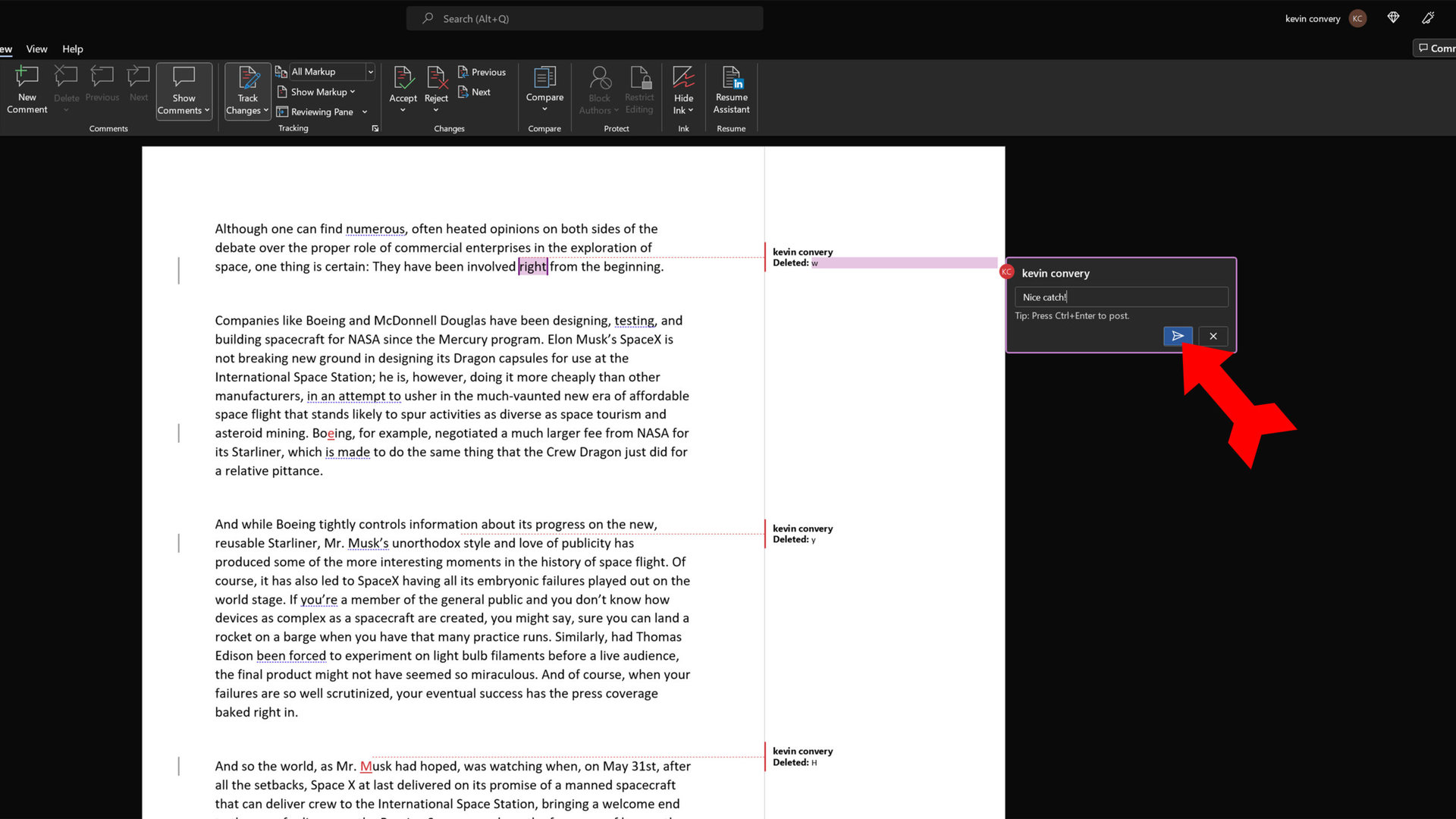
Kevin Convery / Android Authority
You can edit or delete your comment if you say something you wish you hadn’t. The controls to do this are in the comment box itself. The pencil icon will let you edit your Track Changes comment, and the three-dot drop-down will let you delete it altogether.
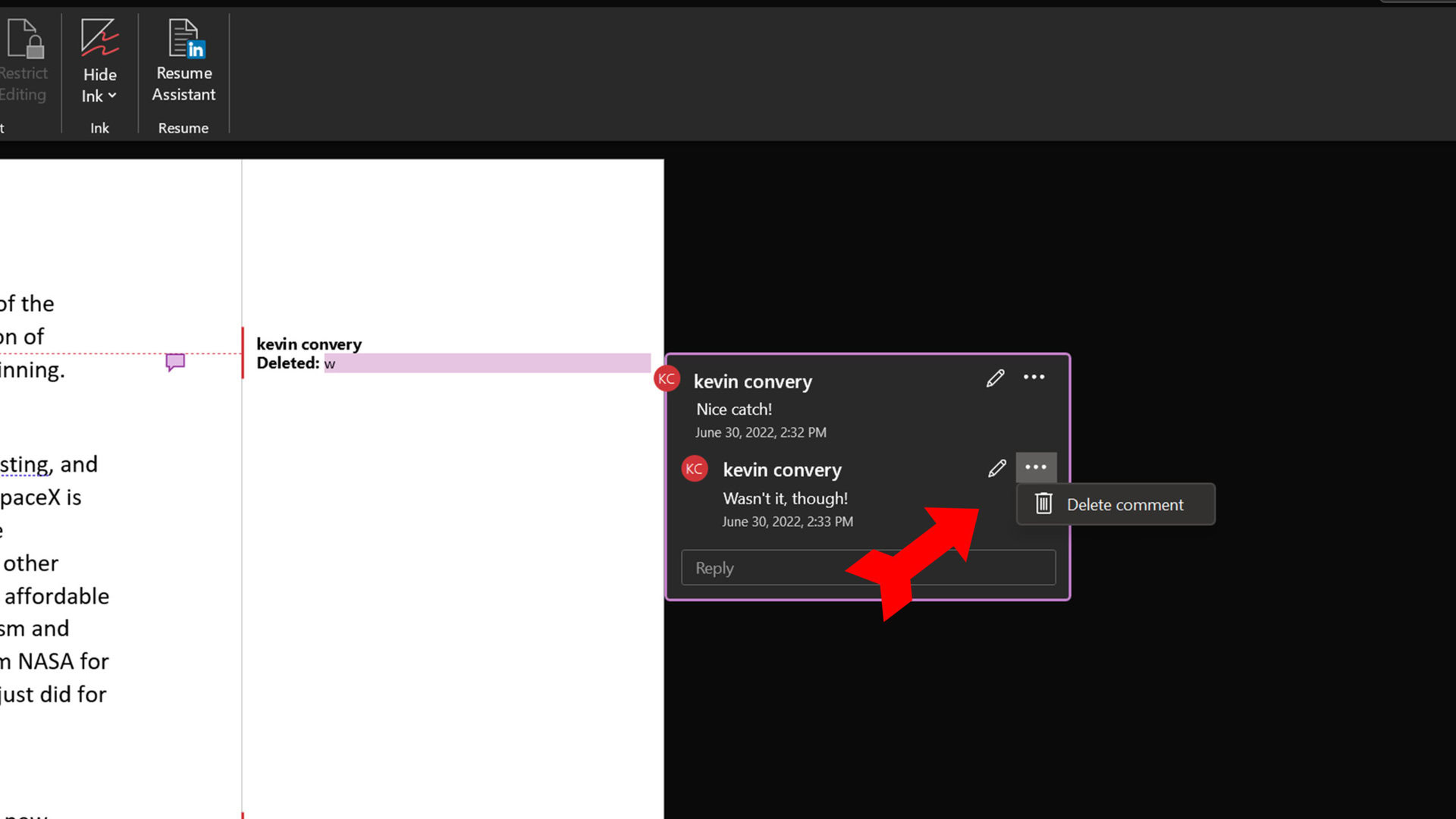
Kevin Convery / Android Authority
Clicking the lower half of the Track Changes button offers a choice to Lock Tracking. Clicking this will bring up a window that lets you password-protect Track Changes, so no one without the password can turn it off.
In your Print menu, click Print All Pages. Then, under Document Info, click the Print Markup button to uncheck it. Your document will now print without the Track Changes markup displayed.



